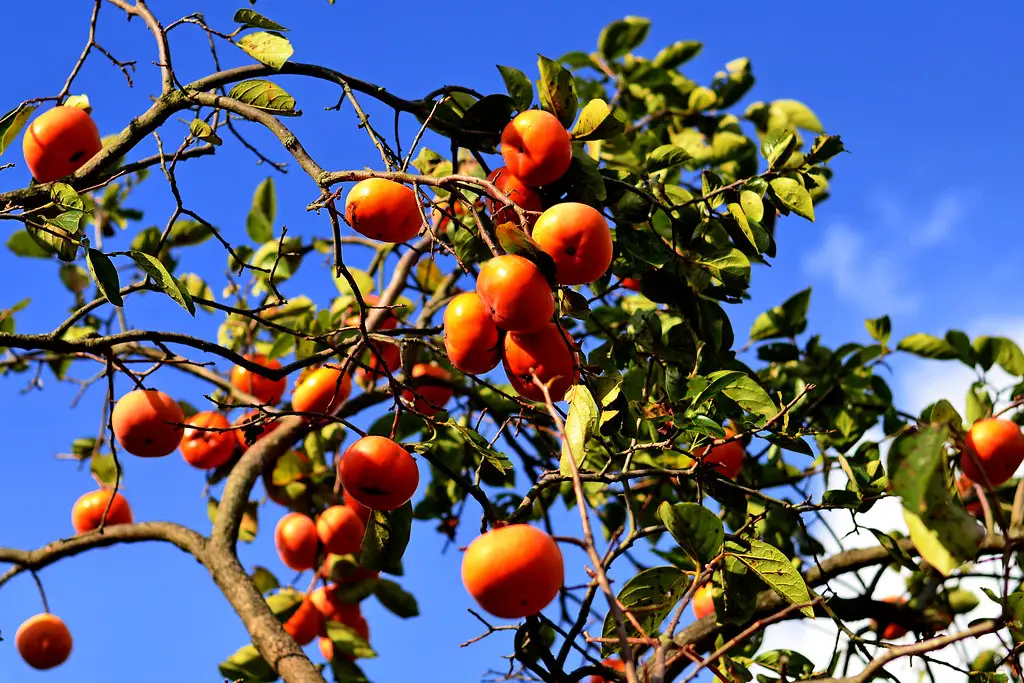The Persimmon tree is a remarkable deciduous tree known for its sweet, flavorful fruit that can be enjoyed fresh, dried, or cooked. Often considered a symbol of autumn, the fruit changes color from green to bright orange-red as it ripens, adorning the tree with a vibrant display.
Native to China, the Persimmon tree has spread across various parts of Asia, Europe, and North America. It has been cultivated for centuries and holds a special place in various cultures. Some see it as a symbol of transformation and joy, while others appreciate its ornamental value in landscaping, where it adds visual interest, particularly during fall.
There are different varieties of Persimmon trees, with the most common being the American Persimmon (Diospyros virginiana) and the Japanese Persimmon (Diospyros kaki). Regardless of the variety, these trees can grow quite tall and are relatively easy to care for, rewarding patient gardeners with bountiful harvests.
| Aspect | Details |
|---|---|
| Common Names | Persimmon, Sharon Fruit |
| Botanical Name | Diospyros spp. |
| Family | Ebenaceae |
| Plant Type | Deciduous Tree |
| Mature Size | 15-60 feet depending on species |
| Sun Exposure | Full Sun |
| Soil Type | Well-Drained, Loamy |
| Hardiness Zones | 4-9 |
| Native Area | China, Eastern United States |
Persimmon Care
Growing a Persimmon tree requires a focus on proper sunlight, soil, and water. Once established, these trees are relatively low-maintenance but will benefit from regular attention to these key aspects.
Choosing the right location with ample sunlight is crucial, as is planting in soil that offers proper drainage. Regular watering during the growing season helps ensure a healthy tree, but it’s important to avoid overwatering, particularly in regions where rain is frequent.
Light Requirement for Persimmon
Full sun is ideal for the Persimmon tree, providing at least 6 to 8 hours of sunlight per day. Adequate light ensures healthy growth and fruit production. A spot that receives morning sun can be particularly beneficial.
Soil Requirements for Persimmon
Persimmon trees prefer well-drained, loamy soil. They can tolerate a variety of soil pH levels but thrive in slightly acidic to neutral soil. It’s beneficial to add compost or organic matter to the soil to improve its quality.
Water Requirements for Persimmon
Regular watering is essential, especially during the first few years of growth. Once established, Persimmon trees are quite drought-resistant. Be mindful of the soil’s moisture level, ensuring it doesn’t become waterlogged.
Temperature and Humidity
Persimmon trees can tolerate various temperature ranges but are most fruitful in regions with distinct seasons. They require cold winter temperatures to go dormant and a warm growing season to produce fruit.
Fertilizer
A balanced, slow-release fertilizer applied in the early spring can encourage growth. Be careful not to over-fertilize, as excessive nutrients may lead to more leaves and less fruit.
Pruning Persimmon
Pruning is essential for maintaining a healthy Persimmon tree. Trim dead or overcrowded branches during the winter months to promote better air circulation and sunlight penetration.
Propagating Persimmon
Persimmon trees can be propagated through grafting or cuttings. Grafting is more common and involves attaching a section of a Persimmon tree to the rootstock of another compatible tree.
How To Grow Persimmon From Seed
Growing Persimmon from seed is a lengthy process and can be somewhat unpredictable. After extracting seeds from ripe fruit, they must be stratified in the refrigerator before planting.
Common Pests & Plant Diseases
Mealybugs and Aphids
These can be treated with insecticidal soap or neem oil.
Canker Disease
Prune affected branches and apply fungicides if needed.
Common Problems With Persimmon
Fruit Drop
Often a sign of stress, which may be caused by inconsistent watering or extreme temperatures.
Leaf Spot
Typically a fungal issue; proper watering and pruning can prevent it.
Poor Fruit Production
Can result from inadequate sunlight, improper pruning, or over-fertilizing.
Pro Tips
- Choose a sunny location with well-drained soil.
- Be patient, as Persimmon trees may take several years to bear fruit.
- Use a balanced fertilizer, but avoid over-fertilizing.
- Regularly check for signs of pests or diseases and treat them promptly.
- Prune in the winter to maintain the tree’s shape and health.




